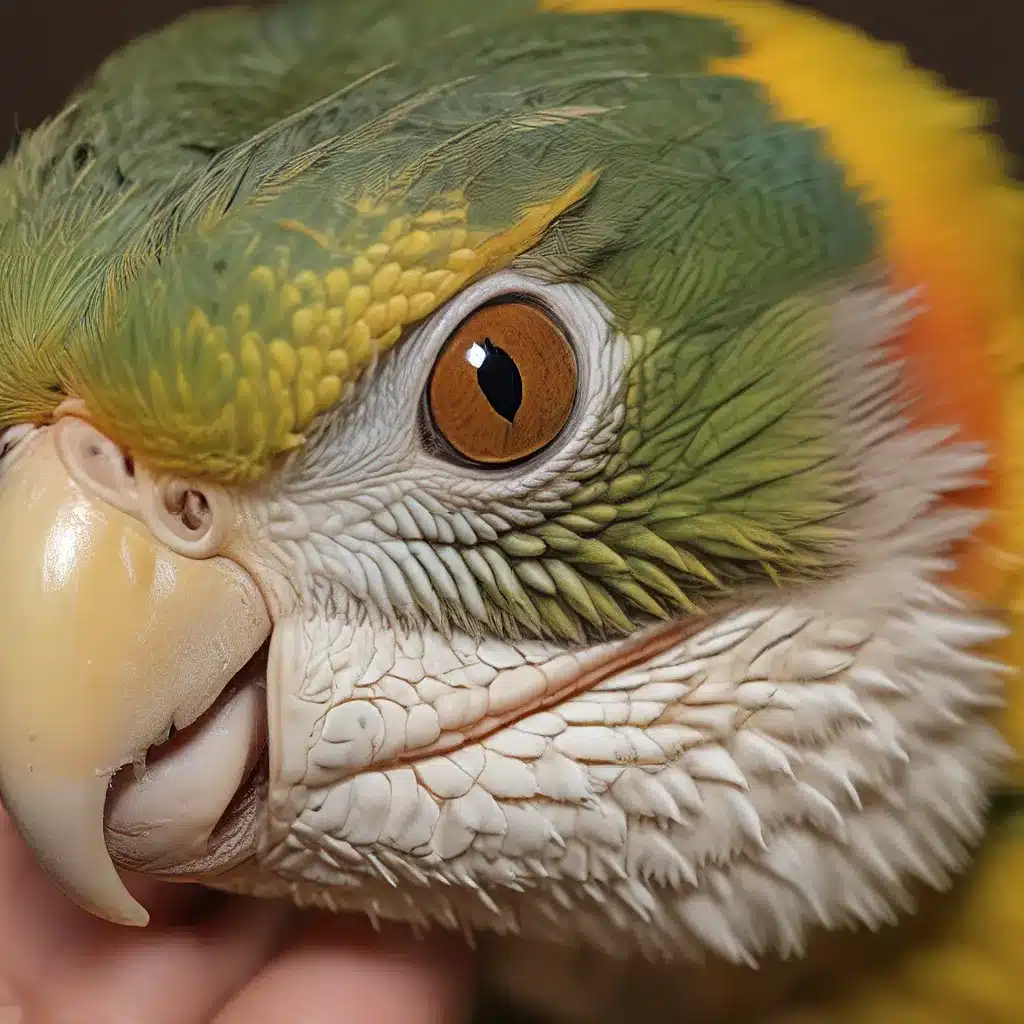
Ahh, the wonders of the animal kingdom! As an exotic pet enthusiast, I’ve had the privilege of befriending some of the most fascinating creatures on the planet – from the playful antics of my beloved parrots to the mesmerizing slither of pythons. But you know what they say, “with great pets come great responsibilities.” And when it comes to our scaly, feathery, or furry companions, one of the most important responsibilities is mastering the art of behavior modification.
The Ins and Outs of Operant Conditioning
Now, I know what you’re thinking – “Operant what-now?” Don’t worry, I’ve got you covered. Operant conditioning is the process of learning behaviors through consequences. In simpler terms, it’s all about understanding how our pets’ actions are influenced by the rewards (or punishments) they receive.
Let’s take a look at a classic example. Imagine your pal Funky the Owl. Whenever Funky hears the sound of his crate door opening, he knows that a delicious treat is waiting for him inside. So, he eagerly flies over to the crate, because he’s learned that this behavior is rewarded with a tasty morsel. This is the essence of operant conditioning – the consequence (the treat) reinforces the behavior (flying to the crate).
But here’s the thing – operant conditioning is just one piece of the puzzle. There’s another equally important technique that’s gaining traction in the world of exotic pet training: positive reinforcement.
The Rise of Positive Reinforcement
Positive reinforcement, my friends, is where the magic happens. Instead of focusing on consequences, this method emphasizes the power of rewards to shape behavior. It’s all about creating an environment where our pets are motivated to do the right thing, rather than being forced to comply.
Picture this: you want your python to climb into their enclosure without a fuss. With positive reinforcement, you might start by rewarding them with a tasty treat every time they voluntarily approach the enclosure. Over time, you can gradually shape the behavior, moving the treat closer and closer to the desired spot until the python is happily slithering right into their home.
The beauty of positive reinforcement is that it empowers our pets to make their own choices, rather than feeling like they’re being coerced. As Susan Friedman, the renowned animal behaviorist, explains, “Choice has been shown to be a biological need for behavior health.” By giving our exotic companions a sense of control, we’re not only building a stronger bond, but also promoting their overall well-being.
The Humane Hierarchy: A Roadmap for Ethical Training
Now, I know what you’re thinking – “Okay, I get the difference, but how do I actually apply these techniques?” Fear not, my fellow pet enthusiasts, because there’s a handy tool that can guide us through the process: the Humane Hierarchy.
At the bottom of the hierarchy, we have the holy grail of training: positive reinforcement. This is where we focus on rewarding the behaviors we want to see more of, whether it’s a treat for a parrot who steps onto our hand or a belly rub for a python who coils calmly in their enclosure.
As we move up the hierarchy, we encounter negative reinforcement, where we remove something unpleasant (like the pressure of a halter) when the animal performs the desired behavior. Then there’s positive punishment, where we introduce something aversive (like a startling noise) to discourage an unwanted behavior.
At the very top, we find negative punishment, where we take away something the animal enjoys (like playtime) as a consequence for misbehaving. And finally, there’s the dreaded coercion zone, where we use physical force or intimidation to compel our pets to comply.
Now, I know what you’re thinking – “Yikes, that sounds pretty intense!” And you’re absolutely right. That’s why the experts recommend exhausting all the lower-tier options before even considering the more restrictive techniques. After all, our goal should be to create a relationship built on trust, not fear.
Exotic Pets, Unique Challenges
But let’s be real, working with exotic pets can present some unique challenges. I mean, have you ever tried to train a python to do tricks? It’s not exactly like teaching a dog to roll over, you know?
That’s why it’s so important to have a deep understanding of your pet’s natural behaviors and temperament. A cockatoo, for example, might respond better to frequent, bite-sized rewards, while a ball python might prefer a more gradual, low-key approach.
And let’s not forget the importance of seeking out experienced exotic pet veterinarians, like the ones at the Cornell University Hospital for Animals, who can provide invaluable guidance and support. After all, the health and well-being of our pets should always be our top priority.
The Payoff: Happier, Healthier Pets
So, what’s the ultimate payoff for all this hard work, you ask? Well, my friends, the answer is simple: happier, healthier, and more well-adjusted exotic pets.
When we use positive reinforcement and the Humane Hierarchy to shape our pets’ behaviors, we’re not just teaching them new tricks – we’re building a foundation of trust and cooperation that can last a lifetime. And let me tell you, there’s nothing quite like the feeling of watching your once-skittish parrot or python eagerly approach you, excited to engage in a training session.
But it’s not just about the cute factor. By promoting voluntary cooperation and reducing stress, these behavior modification techniques have been shown to improve the overall health and well-being of our exotic companions. And as any responsible pet owner knows, that’s the true measure of success.
So, my fellow exotic enthusiasts, let’s embrace the power of operant conditioning and positive reinforcement. Because when it comes to our beloved parrots, pythons, and everything in between, the rewards of a little behavior modification go far beyond a few fancy tricks. It’s about creating a harmonious, enriching relationship that benefits both us and our cherished pets.

